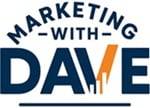Brief Summary

In 2012, Target used predictive analytics to assign a “pregnancy prediction score” to customers based on their purchasing behavior. The algorithm identified a teenage girl’s pregnancy, prompting her father to complain after she received baby-related coupons.
Target later admitted to interspersing baby offers among general household ads to reduce creepiness, but the incident sparked a national outcry over privacy and personalization.
Company Involved
Marketing Topic
- Personalization
- Data-driven strategy
- Customer experience
- Data ethics
Public Reaction or Consequences
- A widely reported anecdote of a father complaining when baby coupons were delivered to his pregnant teen daughter.
- Public backlash over ethical implications of inferring personal life events without consent.
- Coverage in *NYT*, *Forbes*, *Time*, *Slate*.
- Conversations about customer privacy, transparency, and the adequacy of TOS.
Why It Matters Today
Highlights the tension between hyper-personalization and consumer trust. Serves as a caution for AI-driven lifecycle targeting which is still a privacy concern in a GDPR/CCPA era. Teaches modern marketers about ethical context and consent in data activation.
3 Takeaways
- Personalization must respect boundaries. Accurate predictions can feel invasive without permission.
- Transparency is essential. Disclose data usage to maintain trust.
- Use camouflage sparingly. Mixing targeted and non-targeted content reduces perceived intrusion, but consent trumps camouflage.
Notable Quotes and Data
- “Target calculated the girl was pregnant by combining data from individual purchases across approximately 25 product categories.”
- “Target then began interlacing baby product coupons … with coupons for lawn mowers and other random items to avoid the perception that they are spying on their customers.”
Full Case Narrative
In early 2010, Target data scientist Andrew Pole developed a predictive model using baby registry data and purchase histories of products like unscented lotion, calcium, zinc, and magnesium. The goal: detect pregnancy early when purchasing needs change. By assigning each customer a “pregnancy prediction score,” Target could send relevant coupons precisely when the timing aligned with early and mid-pregnancy.
A few years later, journalist Charles Duhigg’s *New York Times Magazine* article detailed an incident where a father discovered his teen daughter’s pregnancy because she received maternity coupons. This narrative went viral under headlines like “How Target Figured Out a Teen Girl Was Pregnant Before Her Father Did.”
After the uproar, Target defended the program, emphasizing that coupon mailers included other products to camouflage sensitive targeting. But the backlash ignited serious debate over privacy, lifespan targeting, and whether TOS consent was sufficient.
Today, marketers view the case as a turning point—an early wake-up call about where personalization meets privacy boundaries.
Timeline
- 2010: Andrew Pole rolls out pregnancy-prediction model using purchase data from baby registry customers.
- February 2012: *NYT Magazine* publishes Duhigg’s article; anecdote of teen pregnancy becomes national headline.
- 2012–2013: Target adds mixed-content mailers to reduce creepiness.
- Post-2012: Public-private dialogue catalyzes privacy frameworks and regulations.
What Happened Next?
Target continued to refine its analytics with attention to perception, adding unrelated offers to avoid being intrusive. The incident helped spark consumer data bills and frameworks. Predictive personalization persists today, now backed by opt-ins, disclosures, and ethical guardrails.
One Sentence Takeaway
Even the smartest personalization can backfire without transparent consent and respect for customer boundaries.
Sources and Citations
Charles Duhigg, How Companies Learn Your Secrets , New York Times Magazine, February 16, 2012.
Kashmir Hill, How Target Figured Out a Teen Girl Was Pregnant Before Her Father Did , Forbes, February 16, 2012.
Gregory Piatetsky, How Companies Learn Your Secrets , KDnuggets, February 2012.
AIAAIC Incident Repository, Target predicts teen girl pregnancy , AIAAIC, February 2012.
Time, How Target Knew a High School Girl Was Pregnant Before Her Parents Did , Time, February 17, 2012.
Drive Research, How Target Used Data Analytics to Predict Pregnancies , January 8, 2023.
Wikipedia, Target Corporation – Consumer data usage , accessed June 2025.
